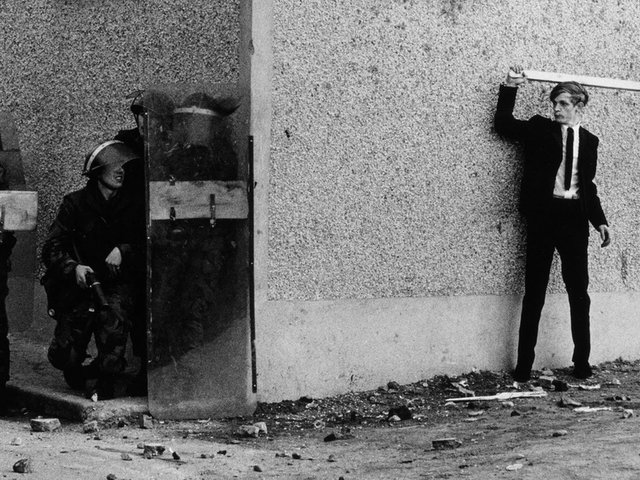The refrain “please mind the gap” is heard in British railway stations when one boards or leaves a train. This gap is between the forward-moving train and the left-behind past. Peter Fraser, a catalogue by Martin Clark, the director of the Bergen Kunsthall, Norway, follows two parallel tracks: the journey of the photographer and the history of British photography since the 1970s. The book’s text is divided into four chapters, each of which addresses a period of Fraser’s development, and these are separated by his photographs—literally in the gap.
It is acknowledged that photography as an art form has previously been neglected by the Tate. The appointment of its first curator of photography, Simon Baker, in 2009, signalled a change in direction for the organisation as it attempts to close a wide gap in its collection and improve its exhibiting of the medium. The text of this Tate catalogue, written by David Chandler, a professor of photography at Plymouth University, can be read as a companion piece to his essay for the monograph on another key British colour photographer, Paul Graham (published by SteidlMack). Both of these essays draft out a similar timetable for the story of recent British photography.
From South Wales to Memphis
Chandler identifies the tracks of a railway line as a starting point for Fraser. Walking along several miles of track in Pontarddulais, South Wales, Fraser considered the photographs he could take. On his journey to maturity, he met fellow students Daniel Meadows and Martin Parr at Manchester Polytechnic. Later, he responded to the American New Topographics, as shown in the first major project recorded here: “The Flower Bridge”, 1982. More significant was Fraser’s response to the colour photography of William Eggleston, whose work he first saw in 1982 and with whom he stayed in Memphis, Tennessee, two years later. It is this encounter with Eggleston’s work that has informed the rest of Fraser’s photographic travels, from his 1984 project “12 Day Journey” (which begins at St Just in Cornwall, near Tate St Ives) to the more recent “A City in the Mind”, 2012. Chandler guides us through each photographic project, as well as Fraser’s travels in the British photographic community of this period.
In an interview with Jem Southam, which closes this survey, Fraser contrasts his working methods with Southam’s, noting that he does not like to return to a place to photograph but instead needs to find new ground. Southam, a colleague of Chandler’s at Plymouth University, is a landscape photographer who, along with Fraser and Paul Graham, was a leading figure in the New Colour Work of the 1980s. The interview is an important exchange between two of Britain’s leading practitioners, enabling Fraser to, in his own words, fill in any gaps in Chandler’s account of the photographer’s practice.
Chandler points out that, in the 1980s, photobooks became milestones in what is termed post-documentary photography. Fraser has made his own contribution to this canon, starting with his first book, Two Blue Buckets, 1988. Although a number of his photobooks accompany exhibitions, the Tate catalogue does not strictly fall into this category; it does, however, fill in the gaps on our bookshelves, acting as a guide to his previous publications.
This monograph helps us to mind our past. It is an account of the photographic heritage we have left behind, and also charts the restless progression of one artist who tests the limits of his medium.
*
Peter Fraser
Martin Clark, Sara Matson, eds
Tate Publishing, 224pp, £29.99 (hb)
Originally appeared in The Art Newspaper as 'Filling a gap'



